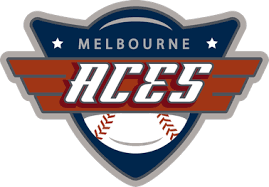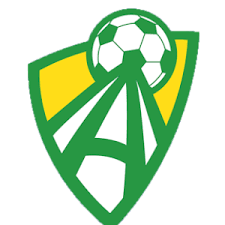This handout provides information about what to expect and how to care for your knee after an ACL Reconstruction. It is provided as a general guide and does not constitute nor replace specific medical advice.
The ACL is a major stabiliser in the knee and when ruptured can limit movement and give a feeling of uncertainty to the knee when performing twisting activities.
A reconstruction involves harvesting another ligament from your knee to replace the damaged one. Usually this is part of one of your hamstring tendons, but occasionally can be from your patella tendon. Your Surgeon will discuss this with you. You will have a small incision at the front of your knee, as well as two small nicks just below your knee cap and a small puncture wound in your thigh. The graft will take 9-12 months to fully heal and will need protecting in this period.

Dressings
The small incisions are usually closed with small tapes (steristrips) and additional non- dissolving stitch is also used for the harvest site. The wounds are covered with a showerproof plastic dressing and a bandage. For most knee reconstructions ,the bandages are reduced on discharge and an elastic stocking is used to assist with swelling. Only change the plastic dressing if it has lifted and fluid has oozed out. .You will be informed by your nurse if your surgeon prefers for it to be done differently. Some altered sensation or numbness may occur on the front of the knee as a result of small nerves being damaged during the procedure. This is common and unavoidable; usually this will gradually resolve and the area will get smaller.
Brace
You may have a brace for the first couple of weeks following your procedure. This is to assist the knee to settle and protect the graft. Your Physiotherapist will instruct you on this.
Swelling
During the first 3 days it is important to elevate your leg as much as possible. You can then gradually increase your activity guided by pain and swelling over the next week or so. Respect your knee for a month, It is common for the knee to have a degree of swelling for 3- 4 months
Review
You should have an appointment made 1-2 weeks following your surgery. Physiotherapy starts after this.
Flying
It is always preferable to wait 6 weeks to fly following any lower limb surgery. Short local or interstate flights are probably ok, but the risk of blood clots is greater than normal. Discuss any planned post operative flights with your surgeon, as there may be special precautions that may be considered on individual basis.
Medication
You will be provided with medication upon your departure from hospital. Follow the instructions as described to you by your nurse. As a general rule, your medication requirements should continue to decrease over the early post operative period.
Remember if you are using codeine based products that constipation can be an issue so keep up the water and a fibre based product such as Metamucil or Coloxyl can be of assistance.
Physiotherapy
You will be seen by a physiotherapist whilst in hospital at the request of your surgeon (for uninsured patients there will be a small fee for this) to ensure your recovery is as quick as possible. Exercises and advice will be given to help get you going and you will be shown how to use crutches. These exercises should be attempted gently until your review at which time you will commence a graded rehabilitation program over the next 9-12 months. Following is an exercise program designed by the Physiotherapy team to help get you going. Please attempt the exercises in the days following your operation and gradually increase the amount as your knee allows. Don’t push too hard or you will irritate the knee; see how it recovers before increasing the amount of exercise or activity you do. Too much is as bad as not enough! Please call the Physiotherapist on 9815 2555 if you have any queries.
Clicking
This is common during the recovery phase and shouldn’t be painful. It usually relates to poor muscle control and usually settles with gradual strengthening and rehabilitation. Squelching noises are also common and relate to excess fluid in the joint which will dissipate with time.
Driving
If its your operated knee that you use to drive, you cannot drive until you have good control of your leg. This is not usually until about 2-3 weeks following your operation. Needless to say you need to be out of the splint to drive. If its your non- driving leg, then you can drive in the week following your operation.
Activities
Unless otherwise instructed you can take about 50% of your weight on your leg as comfortable. You will use crutches for the first couple of weeks as you will need to allow the knee to settle You will be given specific instructions should you need to use crutches for a longer period of time ( for example if there has been a meniscal repair).
To negotiate steps and stairs
UP – good leg first, then operated leg then crutches (if used)
DOWN – crutches first (if used), operated leg, good leg.
Time off work depends upon the type of procedure and the job that you do. Most patients return to sedentary work after a week or two. Getting too and from work will be harder than you think and your knee will be easily irritated. Manual workers may require 3-4 months and sometimes even more time off work. You Specialist and Physio will be able to guide you with this.
There are milestones that must be followed following your operation as the graft will need protection
No running – 3 months Gentle Sports – 6 Months Impact/Twisting Sports 9-12 Months
Complications
ACL Reconstruction is generally a very safe procedure and complications are uncommon, however despite the highest surgical standards and precautions they can occur. Potential serious problems include infection and calf vein thrombosis (blood clots).
An onset of fevers or sweats, or increasing redness and discharge from or around the wound can indicate that an infection is present. Please call if this occurs.
Likewise, please call if there is discomfort caused by bandages that are too tight or are loose and have become ineffective.
If you experience fevers, persistent swelling or bleeding or pain in the calf you should call the ward on 9009 3800 or contact your surgeon or attend to your GP or nearest hospital emergency department.
*All information in this brochure is a guide and is the opinion of Glenferrie Private Hospital
EXERCISES
The following exercises help to maintain circulation, strength and flexibility whilst you are recovering from the operation. They will suffice until you have your review when you should be ready to progress to higher levels of activity such as the exercise bike and walking. Try to perform them 2-3 times a day, starting on the day of your operation.
Ankle pumps:
Move your feet up and down from the ankles for 30 seconds.

Quads exercises:
a) Quads tightening: Push the back of your knee down toward the bed, locking your knee fully straight, by tightening your thigh muscles (quads). Hold for 3 seconds. Repeat 10 times.

b) Straight leg raise: Lock your knee straight, then slowly lift your leg up about 20 cm. Lower slowly. Repeat 10 times.

Hamstring Exercises
a) Stretch Keeping your operated leg straight, reach down for your toes.
Hold for 20 seconds. Repeat 3 times

b) Tightening Dig your heel into the bed (like you are scraping something off your heel) whilst not moving the heel. Hold 3 seconds Repeat 10 times

Knee bending:
a) Lying: Gently bend your knee, sliding your foot toward your bottom. Use your hands to assist if necessary. Repeat 10 times.

If any of these exercises cause significant pain, please contact your physiotherapist or surgeon.
The advice contained in this handout is appropriate for the first week after your operation, however the average recovery from knee arthroscopy takes 3-4 weeks. Further physiotherapy to reduce swelling, regain range of motion and strength, and prepare for return to work or sport, is often required. Glenferrie Sports and Spinal Clinic is located within Glenferrie Private Hospital and The Hawthorn Aquatic and Leisure Centre, specialises in orthopaedic surgery rehabilitation. We work closely with the surgeons who performed your operation.
It is usually possible to arrange a physiotherapy review to follow immediately after your review with your surgeon. Call our office on 9815 2555 if you would like to book an appointment.














